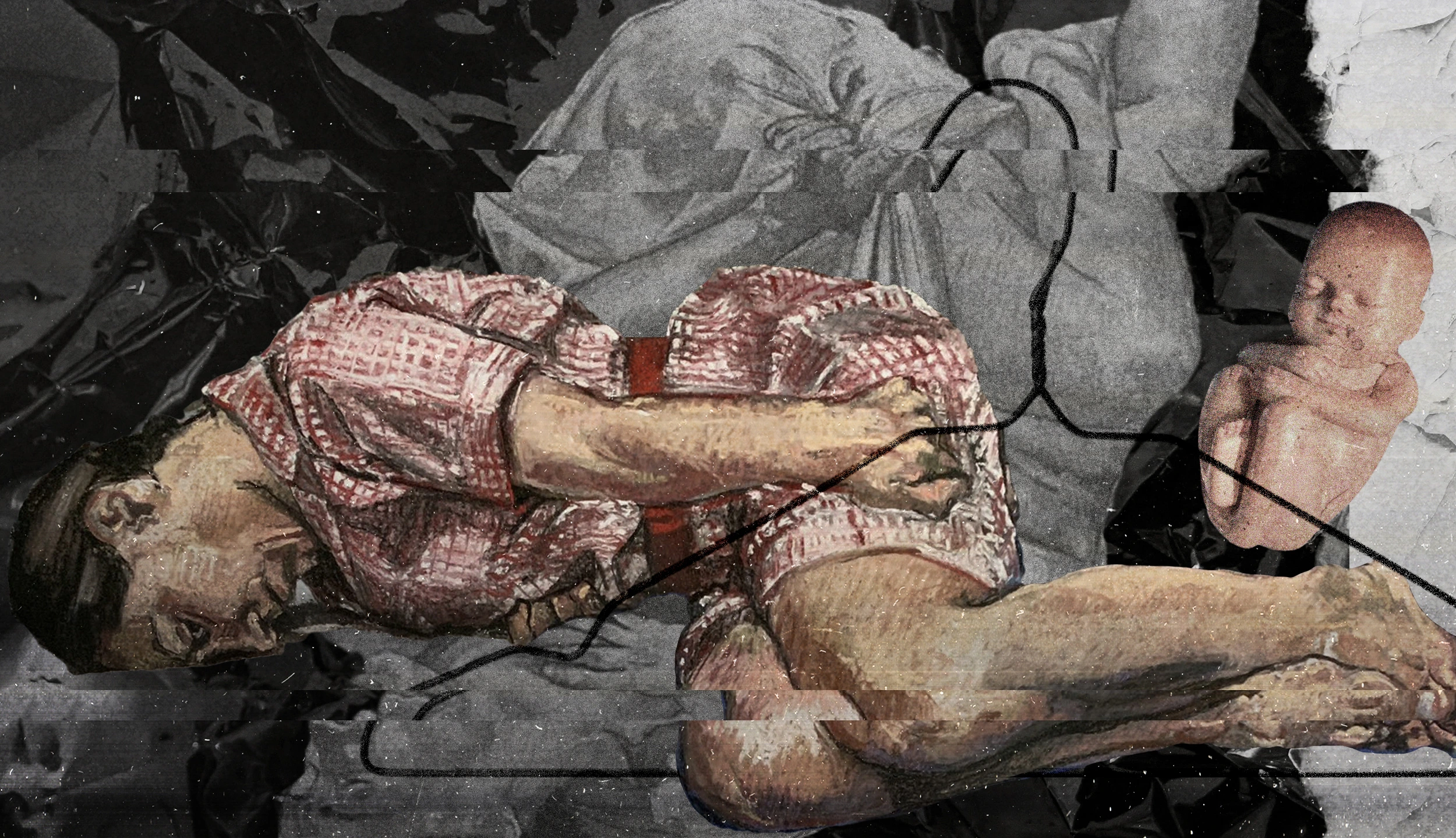— Gender studies has often been attacked by the Russian conservative public as a “Western discipline” that is hostile to traditional values. What is the situation now?
— Gender studies is not only a subject matter, but also a set of theories and methods, that can be applied to a wide range of areas. Of course, researchers can use these, and no one can forbid them from doing so. However, carrying out this kind of research in academic institutions in Russia has become more difficult and dangerous in recent years. Openly voicing one’s position and affiliation can create problems. This is, of course, due to the neoconservative turn in politics and jurisprudence. First, there are restrictive laws. For example, because of the 2013 law imposing liability for “propaganda of non-traditional sexual relations among minors”, there are restrictions if you write on issues connected with LGBTQ+ issues. Second, working with academic institutions when you defend a thesis or publish an article is challenging. You have to be careful when choosing a title or manner of writing. As for popular educational projects and public events, you always have to think about safety and how to protect the organizers, participants and attendees. The proposed new law on propaganda most likely will make these projects and events impossible, because it is very vague how the law is to be enforced in practice.
— What kind of reproductive policies does Russia have and how have they changed in recent years?
— The political establishment has been concerned with the low birth rate in Russia since the mid-2000s. In his 2006 “Address to the Federal Assembly” , Vladimir Putin said that the country’s most pressing problem is a demographic crisis. Since then, researchers have been recording the strengthening of the “pronatalist” policy aimed at increasing the birth rate. Additional funds have been allocated to improve the obstetric care system and a “maternity certificate” program has been introduced, which has allowed women to choose hospitals and doctors. Perinatal centers have been built, and a system of providing access to special perinatal care has been developed, so that in complicated cases one can count on medical care in almost any budget-funded institution in the country, regardless of place of residence.
“The political establishment has been concerned with the low birth rate in Russia since the mid-2000s”
In 2007, the state introduced a program of financial support for young families called “maternity capital”; over time the conditions for getting it have become easier, and the amount has been increased in line with inflation. The sum of money involved is substantial, and there are additional payments in some regions of the country. Has the birth rate increased as a result of this program? Sociologists and demographers have different answers to the question. We, sociologists, believe that it has not, because the apparent increase occurred simply because people who already planned to have children received an incentive to do so earlier. Demographers, on the other hand, say that the birth rate has risen slightly, although it is still quite low.
In subsequent years, the state has also begun to pay a lot of attention to “abortion prevention” measures. Since 2011-2012, the number of permitted social conditions for pregnancy termination has been reduced significantly. Previously, abortion after 12 weeks was allowed if the pregnancy was the result of a legally proven rape, if the father of the child had a disability or died, if there was a court decision to deprive or restrict parental rights, or if the woman was in prison. Now rape is the only condition for the procedure, with the exception of medical ones, of course. In addition, the consultation with a psychologist is now mandatory before an abortion, and the procedure itself may be carried out at least 48 hours after request (depending on the stage of pregnancy). Medical professionals are also allowed to refuse to perform the procedure on religious grounds. In large cities this is not such a big deal, but if you live in a small town with a single obstetrician-gynecologist, do not have much money, or have other children who need care, all this can create serious obstacles.
At the same time, family planning and reproductive centers began to close. They were founded in the 1990s as part of the state medical care system. There, patients could receive a consultation about methods of contraception and abortion. Government institutions said that they were closing the centers due to economic inefficiency. As a result, some doctors continued working in “women’s health departments” (obstetrics and gynecology centers), but in fact the separate units had ceased to exist.
— Did this effort to increase the birth rate and limit reproductive rights have any ideological element, in addition to the policy change?
— Most of the measures I have mentioned were introduced during Putin’s second presidential term. In 2008, an annual “Day of Love, Family and Fidelity” on July 8 was created. During Medvedev’s presidency, the figure of his wife Svetlana emerged. She set up a charity foundation aimed at strengthening “traditional values”. “Prevention of abortions” was one of its primary tasks. In 2014, when I was collecting data for my research in small towns, obstetricians and gynecologists told me that this foundation or its representatives were distributing booklets, manuals, and models of a human embryo at 12-weeks. These models were shown to women who wanted an abortion. One of the doctors in charge of the abortion clinic proudly claimed that she had managed to talk 10 women out of having an abortion in one year. There were also doctors who, because of religious or moral convictions, wanted to refuse the procedure.
“The doctor in charge of the abortion clinic proudly claimed that she had managed to talk 10 women out of having an abortion in one year”
The authorities’ rhetoric regarding reproductive rights has been getting more conservative, even traditionalist, every year. This is evident from, among other things, the convergence of state and religious institutions. The Duma has a committee on family, women, and children’s issues; its name changes with every newly elected Duma, but the idea remains the same. The committee organizes roundtables, initiates public discussions, and monitors the reproductive situation in different parts of the country. The fact that representatives of the Russian Orthodox Church have frequently appeared as experts at these events is emblematic.
Every year, Federation Council members, State Duma deputies, or some active citizens initiate a discussion about the need to amend legislation on abortion, for example, to take abortion provision out of the Federal Compulsory Medical Insurance Fund system, to introduce a tax on childlessness, or to take some other measure in support of “spiritual bonds”. So far, none of these ideas has been carried out, but the rhetoric has become more acceptable. People seem to get used to the idea that “doing something about abortion” is an important part of the overall political agenda.
While it is common ground that the population of Russia is at a demographic turning point, the interpretation of this fact is subject to the ideological struggle. On one hand, some conservative politicians attribute the low birth rate to the emergence of feminists, childless couples, homosexuals, and the imposition of Western values that destroy the traditional institution of the family. Scholars, on the other hand, claim that the figures demonstrate a demographic and social pattern. Very few children were born during the economic crisis of the 1990s. Today this generation has reached reproductive age, but they are a tiny fraction of the population, much less numerous than previous generations. The decline in birth rate will only intensify because of economic and social instability. After two years of Covid-19 pandemic, our country is now at war.
— In June, the US Supreme Court eliminated federal protection of the right to abortion. Can we assume that because of the war there will be similar legislative changes, or intensified rhetoric about the need to rebuild the nation’s population, in Russia?
— As I said, the Russian state was concerned about these issues long before the war broke out. Of course, this trend will not reverse, but only intensify. Militarization contributes to its justification: “Enemies are all around, and there is no one to defend us!” However, the question is whether this rhetorical figure is effective. People now are more educated and use contraception more often, which is precisely why the number of abortions is declining. This is where we can expect a problem: the war and the economic situation may affect the availability of contraception. The cost of condoms, for example, will rise. It is possible that, due to rising prices and disruption in the supply of certain goods, we will soon see a humanitarian crisis of contraception. But whether this will benefit the pronatalist state apparatus is a difficult question, because, most likely, it will lead, not to an increase in the birth rate, but to an increase in disease and abortions. If the state restricts access to medical care for the termination of unwanted pregnancies, the number of illegal abortions will increase. Unfortunately, if this happens, we will not see a mobilization of feminist protest, as in Poland and Argentina, because political participation is now limited.
“People seem to get used to the idea that “doing something about abortion” is an important part of the overall political agenda”
On the other hand, we can still rely on the medical community’s judgment. Most experts, obstetricians, and gynecologists recognize that abortion poses a risk to women’s health, and they still understand that abortion should not be banned, because that can only make things worse. In the Soviet Union from 1936 to 1955 abortion was forbidden, a prohibition justified, among other things, by the need to increase the number of soldiers, citizens, and taxpayers. The ban led to a small rise in the birth rate for a short while, when people unexpectedly could not get access to the procedures they had been counting on. However, subsequently, the birth rate did not increase. More illegal abortions lead to an increase in maternal mortality, and are therefore counterproductive for the state.
— Will the war, with its inevitable cult of masculinity, make women more vulnerable? Is it possible that the return of servicemen from the front, and patriarchal propaganda, will lead to even more gender-based and domestic violence?
— Russian society is extremely patriarchal, and support, which we cannot accurately assess at the moment, for military aggression is a consequence of normalization of violence in the country. Violence, that is, towards not only women, but also children. During discussions about the need to criminalize assault within the family, representatives of state power were quite serious in saying that it was impossible to bring up a “normal person” without resorting to physical punishment. However, the problem is not restricted to Russia: researchers are observing “gender backlash” (reversal of previous achievements in the fight for gender equality) in many countries, including the United States. Unfortunately, gender violence exists in every society, and although there are some particular contributing factors in Russia, it does not mean that the problem has been fully solved anywhere else. Of course, in some countries gender-based violence is more widely discussed, there are institutional strategies to combat it, the state takes measures, and public organizations are involved in its prevention.
In Russia, however, the activities of such institutions are limited and there are no programs promoting humanist values and sex education. A Russian citizen, at all stages of life, in every institution she encounters and wherever she seeks help, sees no efforts to diagnose and solve the problem of violence. Given the current situation, it will become increasingly difficult to make progress in preventing domestic violence, not to mention lobbying for appropriate legislation. Not one politician remaining in the State Duma would promote this kind of policy. No one will be able to initiate a public campaign or discussion on the issue because people today are afraid to speak out. All the efforts made by NGOs and through initiatives for decades to make the problem of gender violence visible are collapsing.
Quite the contrary, some institutions, such as the security services, cultivate violence. Political language today also contributes to the situation, normalizing violence at the level of discourse. Thus, with the outbreak of war, “patsan” rhetoric became commonplace. The statement that civilian casualties in Ukraine are a necessary cost is commonplace in state media and the speeches of those who support the war. I think this rhetoric will spread to other aspects of life, including the problem of domestic violence.







